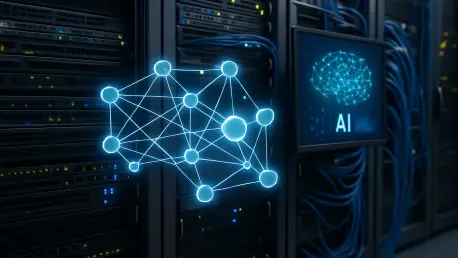As technological advancements redefine the telecommunication networks landscape, the emergence of artificial intelligence (AI) workloads at the network edge is driving a significant transformation. The migration of AI inferencing from centralized data centers to the edge aims to enhance business operations by bringing computational abilities closer to the end users. While inferencing is generally perceived to be less demanding on bandwidth compared to AI training, it mandates robust network optimization. This is crucial to the success of long-haul infrastructural capabilities, as they must effectively accommodate these evolving requirements. This shift is fundamentally altering how network infrastructure is conceptualized and implemented.
Transforming Network Infrastructure
At the core of this evolution is the need for Internet carriers and telecom operators to adapt their networks to efficiently support AI inferencing. Emphasizing scalability, reliability, and low-latency delivery is essential for effective AI operations conducted at the edge. Scalable capacity innovations and improved connectivity networks stand as hallmark indicators of this transformation, necessitating internet carriers to make strategic investments. This is more than just a mere upgrade; it represents rethinking and redesigning the infrastructure to support workloads that are dynamic and sensitive to latency, which are characteristic of today’s AI applications.
The increase in AI-driven applications is anticipated to foster significant growth in AI-optimized servers within data centers, with nearly half of the market’s capital expenditure projected to be dedicated to this technology by 2029. This evolving trend demands Internet carriers pay close attention to refashioning their networks to accommodate increased processing and data transfer needs. Current data centers, characterized by accelerated GPU and TPU servers, only compound the demands on network resources. Such resources are instrumental in handling large data sets, necessitating innovations in optical networking to prevent disruptions during the data transfer process while ensuring efficiency.
Parallels with Content Delivery Networks
Notable parallels exist between the needs of AI inferencing infrastructures and those of Content Delivery Networks (CDNs). While AI workloads are more dynamic and less cacheable due to their specific context-driven nature, both require rapid and localized content delivery. Telecommunication operators are thus tasked with optimizing elements such as reach, capacity, and scalability to meet these decentralized demands efficiently. A reliable and expansive network footprint is critical, similar to the role backbone networks play in distributing content across Points-of-Presence (PoPs) and ensuring low-latency connectivity internationally. This analogy underscores the importance of adapting traditional CDN advantages to the demands of AI processes.
The evidence points to the necessity for networks to remain highly reliable, meeting enterprises’ needs to have model outputs delivered efficiently to the edge. Delivering these outputs involves not only introducing diversity within networks but also adopting sophisticated routing measures like latency-based segment routing. Such strategies are crucial in circumventing challenges posed by geopolitical instability, adverse weather conditions, or unintended disruptions like fiber cuts. By understanding these potential service challenges, networks can adjust strategies to provide high-reliability services essential for real-time AI operations.
Innovation in Optical Technology
One forward-looking initiative to manage the demands of AI workloads involves Internet carriers increasingly adopting coherent pluggables within their backbone networks. These pluggables include 400G coherent optics, with future iterations like 800G pluggables anticipated to address the dynamic requirements of AI workloads. These technologies are pivotal in meeting capacity and scalability demands while leveraging open optical line systems. Moving from traditional architectures heavily reliant on transponders to a more modular, software-focused approach aligns better with how AI inferencing operations function. Such innovations are crucial in maintaining a consistent data flow between core, cloud, and edge nodes.
Exploring the potential of optical innovation as part of infrastructure change allows for a seamless synergy between core and edge components. This synergy supports high-capacity links crucial for processing data, despite its energy-intensive nature. By accommodating the continuous flow of data, innovations in optical technologies offer an opportunity to manage energy consumption and link dynamics seamlessly, bridging gaps between different network segments involved in AI data handling. This transformation marks a significant step towards aligning network capabilities with the modern demands of AI processes.
Sustaining Backbone Connectivity
Backbone connectivity remains an indispensable element in transitioning AI workloads from expansive data centers to the network edge. Its conventional role in data transfer is pivotal for supporting the business value AI promises to deliver through scalable and reliable network solutions. Despite the general consensus on the necessity for robust backbone connectivity, continuous efforts are targeted at enhancing these capabilities for more effective support of AI functionalities at the network frontiers. Seamlessly integrating advanced data management and processing capabilities into backbone infrastructure can transform how network carriers harness AI’s potential.
As the shift towards AI-centric operations becomes more pronounced, the significance of sufficiently optimizing backbone connectivity to align with evolving infrastructural needs cannot be overstated. Internet carriers and telecom operators face the crucial task of ensuring their backbone networks are not only resilient but also composed of advanced, scalable elements necessary for forthcoming AI operations. By moving beyond the traditional constraints of networking infrastructure, they unlock further business opportunities through a robust, future-ready system capable of meeting AI’s demands.
A New Era of Telecom Infrastructure
As technology continues to evolve and reshape telecommunication networks, the rise of AI workloads at the network’s edge has become a transformative force. The transition of AI inferencing tasks from centralized data centers to the edge aims to improve business operations by placing computing resources nearer to the end users. Although inferencing is generally less taxing on bandwidth than AI training, it necessitates strong network optimization to support this shift effectively. Such optimization is essential for maintaining long-haul infrastructure capabilities, ensuring they are equipped to handle new and changing demands. This paradigm shift is not just about advancing technology but also rethinking how network infrastructure is both designed and executed. It calls for innovative approaches to network architecture to balance the needs for speed, reliability, and efficiency while accommodating the demands of new AI-driven applications. This evolution underscores the critical role of robust network frameworks in supporting the future of AI at the edge.









